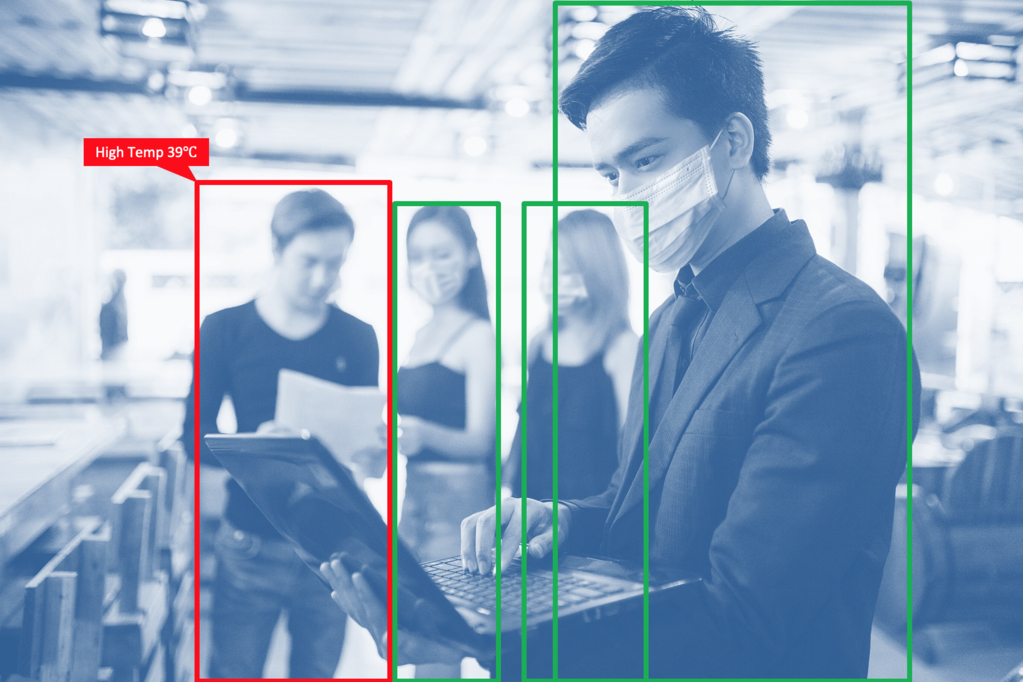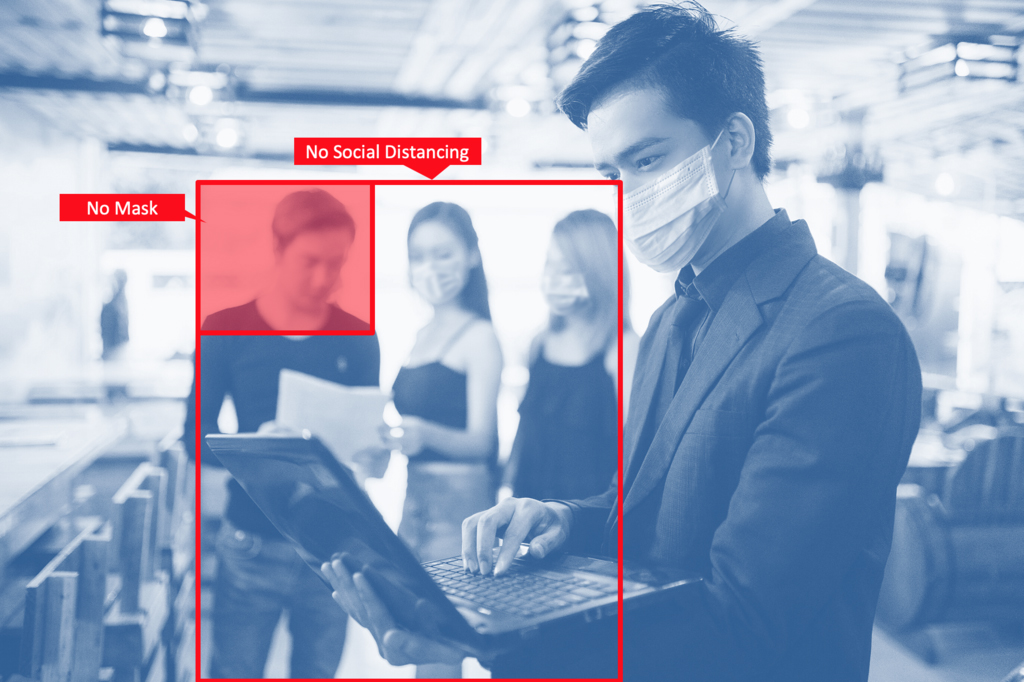As COVID-19 lockdowns begin to lift, life in public spaces will look a little different. Masks and maintaining six feet of distance could become the new normal. And a little camera in the corner could trigger an alert if you don’t wear a mask or step too close.
Working with Microsoft, the Network of Intelligent Camera Ecosystem (NICE) Alliance is developing a system that could allow any connected camera to become a smart camera capable of detecting a lack of social distancing, unmasked individuals, or even fevers. The cameras could send a text alert to business owners when a location is too crowded or social distancing rules are violated, or even trigger a warning in public spaces, such as a warning light.
The NICE Alliance is a group of several camera manufacturers working together to create an operating system where cameras from multiple brands can talk to each other — essentially going from an Apple-like ecosystem only supporting Apple products to an Android-like system supporting multiple brands.
Some smart cameras are already capable of detecting face masks and fevers. Amazon, for example, is using security cameras at building entrances to detect if an employee has an elevated body temperature. But, those are Amazon cameras built specifically for the task. The NICE system is designed to work with existing cameras, requiring just a router instead of the replacement of every camera in the system.
Many small businesses couldn’t afford a completely new smart camera system, even before the lockdown forced many businesses to temporarily close. The NICE Alliance’s goal is to create a system that’s affordable enough for widespread implementation, according to David Lee, the CEO of Scenera, one of the founding members of NICE. The system requires a router or leasing a data box, and a subscription to the cloud service.
The NICE system works by looking for specific scenarios and only uploading data to the cloud that meets specified criteria, since sending data to the cloud 24/7 would be cost-prohibitive. If the camera detects more than two people at an entrance, for example, the data would then be sent to the cloud.
The artificial intelligence on the cloud could then analyze the footage, using facial recognition to determine if individuals are wearing masks, for example, or when an area becomes too crowded. Thermal cameras could also be connected to the system to register if someone in the area has a fever. If certain parameters are met, such as an area being overcrowded or an individual not wearing a mask, the system can be programmed to send an alert to the business owner or trigger a warning light.
Besides leaving much of the information off the cloud entirely, Lee says that the system uses encryption on any personal ID in an attempt to balance the public safety benefits with privacy. Facial detection looks only for the presence of a face mask. The system can use seen attributes — such as the color of a shirt or a hat — to identify where the person is using multiple cameras, without sharing or recording their identity, he said.
While the system could help alert businesses to individuals failing to meet guidelines, those guidelines also don’t apply to every person, as that could generate false alerts for some locations. Family members living in the same household, for example, do not have to remain six feet apart. The CDC also does not recommend masks for children under 2, anyone that can’t remove the mask themselves, and individuals who have trouble breathing.
Lee says that some local governments and office buildings are already considering adopting the system.
The NICE system is finishing up initial trials and expecting to roll out to testbed sites and early adopters in the third calendar quarter of the year. A broader rollout could follow toward the end of the year, if everything goes as planned.




